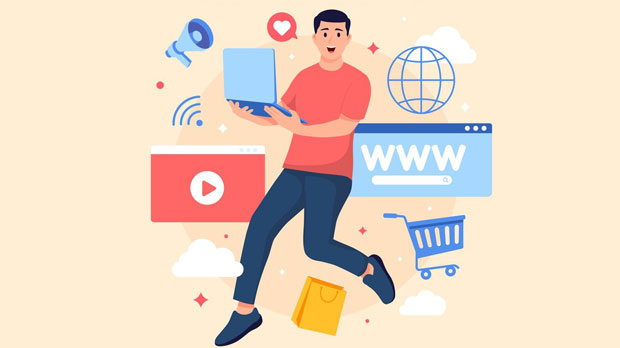When using wireless proxies, a key consideration is how reliably the PYPROXY unblock feature functions. The ability to bypass geographical restrictions and secure access to restricted content is of paramount importance to many users. Wireless proxies are increasingly popular due to their flexibility and convenience, but their reliability can vary based on several factors. PyProxy, an automated tool used for unblocking, plays a crucial role in providing seamless access to the internet, but its performance heavily depends on the configuration, the proxy server's quality, and the encryption used. This article will dive deep into the functionality of PyProxy unblock and explore its reliability in the context of wireless proxies. 1. What is PyProxy Unblock?PyProxy is a tool designed to help users bypass internet censorship and geographical restrictions. It functions as an intermediary, redirecting internet traffic through a proxy server to mask the user's original IP address. The unblock feature of PyProxy is particularly useful for users who need to access restricted content or bypass firewalls. The PyProxy unblock tool works by changing the user's network route, ensuring they can access websites or services that would otherwise be blocked based on their location or network restrictions.When combined with wireless proxies, PyProxy enhances the user experience by providing greater mobility and flexibility. Wireless proxies, unlike traditional wired proxies, allow users to connect through a mobile or portable network, making them ideal for those on the go. However, the reliability of PyProxy in these conditions can be influenced by various technical and operational factors, which we will analyze in the following sections.2. The Role of Wireless Proxies in Enhancing ConnectivityWireless proxies provide users with a connection that does not rely on physical cables or fixed network infrastructure. This flexibility allows for seamless internet access, even in locations where traditional wired connections are unavailable or impractical. Wireless proxies are typically provided through mobile data networks, Wi-Fi hotspots, or other portable solutions, making them an attractive option for users who need consistent access to the internet without being tied to a specific location.For PyProxy users, the primary advantage of wireless proxies lies in their ability to maintain a stable and secure internet connection while avoiding region-based restrictions. However, the quality and reliability of a wireless proxy can fluctuate depending on network congestion, signal strength, and the user's geographical location. When using wireless proxies in combination with PyProxy unblock, users may experience varying results based on these factors.3. Factors Affecting the Reliability of PyProxy Unblock with Wireless ProxiesWhile wireless proxies offer many benefits, several factors can influence the reliability of PyProxy unblock. Understanding these factors is crucial for maximizing the effectiveness of the unblock feature.3.1. Network Stability and SpeedOne of the most significant factors affecting the reliability of PyProxy unblock is the stability and speed of the wireless network. Since wireless networks are subject to interference from various environmental factors, such as physical obstacles, weather conditions, and network congestion, the quality of the internet connection can fluctuate. If the wireless network is unstable or slow, PyProxy may struggle to maintain a consistent connection, leading to interruptions or failures in accessing restricted content.3.2. Proxy Server QualityThe performance of PyProxy unblock is also dependent on the quality of the proxy server itself. Not all proxy servers are created equal; some may have poor performance due to overcrowded servers, limited bandwidth, or outdated technology. When using a wireless proxy in combination with PyProxy unblock, users should ensure that they are connected to a high-quality proxy server that is capable of handling their data traffic efficiently. Low-quality proxies may result in slower internet speeds, frequent disconnections, or even failures to bypass regional restrictions.3.3. Encryption and Security ProtocolsThe encryption and security protocols used by both the wireless proxy and PyProxy are essential for ensuring a secure and private connection. If the encryption methods are weak or outdated, the connection may be vulnerable to attacks, reducing the overall reliability of PyProxy unblock. Additionally, some websites and services may employ advanced detection techniques to identify and block proxy traffic, particularly if the proxy server's encryption is not robust enough.3.4. Geographical Location and Server ProximityThe geographical location of the wireless proxy server and the distance between the user and the server can significantly impact the reliability of PyProxy unblock. For example, if the proxy server is located far away from the user's physical location, the data may need to travel longer distances, which can lead to latency issues or slow speeds. Moreover, some content may be restricted based on regional IP addresses, so choosing a proxy server located in a region where the content is accessible is crucial for bypassing these restrictions effectively.4. Strategies for Maximizing the Reliability of PyProxy UnblockTo ensure the optimal performance of PyProxy unblock when using wireless proxies, users can follow several best practices. These strategies aim to address the factors that influence reliability, such as network stability, proxy server quality, and encryption strength.4.1. Choosing a Reliable Wireless NetworkThe first step in ensuring a stable and reliable connection is selecting a dependable wireless network. Users should avoid using networks with poor signal strength or high levels of congestion. If possible, opt for a Wi-Fi connection with a strong and stable signal, or use a mobile data network that offers consistent speeds. Additionally, users should consider using a 5G or LTE network, as these technologies offer higher speeds and greater reliability than older 3G networks.4.2. Selecting High-Quality Proxy ServersTo maximize the effectiveness of PyProxy unblock, users should choose a high-quality proxy server. Ideally, the proxy server should have fast speeds, minimal downtime, and robust security features. Users should also ensure that the server is located in a region where the content they wish to access is not restricted. Using a paid, reputable proxy service is often more reliable than free alternatives, as paid services tend to have better performance and customer support.4.3. Ensuring Strong Encryption ProtocolsFor enhanced security and reliability, users should ensure that the wireless proxy and PyProxy are both using strong encryption protocols, such as AES-256. This ensures that data traffic remains secure and private, reducing the chances of the connection being intercepted or blocked. Additionally, users should avoid using outdated proxy protocols that may be easily detected and blocked by websites or services.4.4. Testing and TroubleshootingBefore relying on PyProxy unblock for critical tasks, users should test their connection and troubleshoot any issues that may arise. This includes checking the network speed, ensuring the proxy server is functioning correctly, and verifying that the encryption is properly configured. Regularly testing the connection will help users identify potential problems early and take corrective actions before they encounter significant issues.5. Conclusion: Evaluating the Reliability of PyProxy Unblock with Wireless ProxiesIn conclusion, the reliability of PyProxy unblock when using wireless proxies is influenced by a variety of factors, including network stability, proxy server quality, encryption strength, and geographical location. While wireless proxies offer significant advantages in terms of flexibility and mobility, users must ensure that their network connection is stable, their proxy server is of high quality, and their encryption protocols are secure in order to maximize the effectiveness of PyProxy unblock. By following best practices and taking proactive steps to address potential issues, users can enjoy a more reliable and seamless internet experience, free from restrictions.
Oct 21, 2025


































































